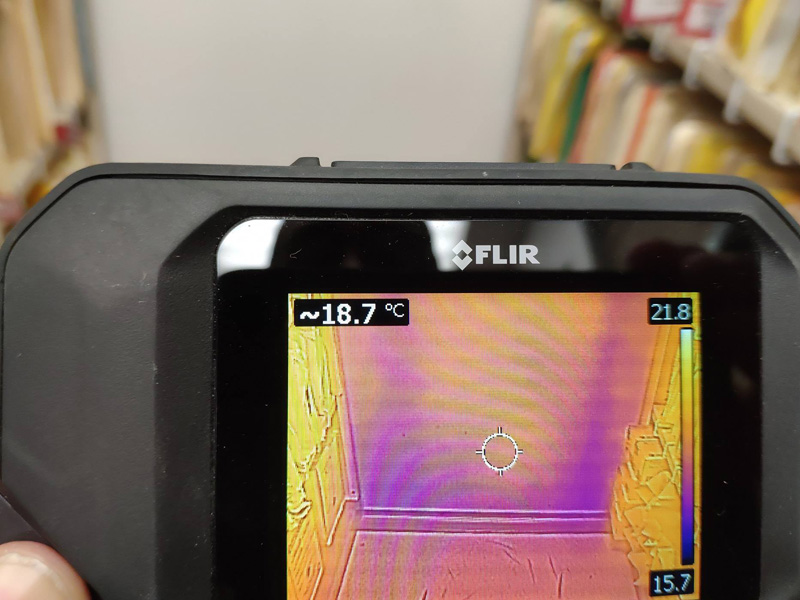Commercial properties, such as office buildings, warehouses, and retail spaces, require regular maintenance and inspections to ensure they are in good working order.
One common issue that can arise in commercial properties is water leaks, which can cause significant damage if left undetected.
Thermal imaging is a powerful tool for detecting leaks in commercial properties, offering several advantages over traditional leak detection methods.
In this article, we will explore the advantages of thermal imaging for commercial leak detection.
What is Thermal Imaging?
Thermal imaging is a non-invasive method of detecting temperature variations in objects and surfaces. It is used to detect leaks in your home or property.
It uses infrared technology to detect changes in heat signatures, which are then displayed on a screen as a visual representation of the temperature variations.
This makes it an effective tool for identifying areas of moisture or water damage that are not visible to the naked eye.
Advantages of Thermal Imaging for Commercial Leak Detection
- Early Detection: Thermal imaging cameras can detect leaks early, before they cause significant damage. This allows property owners to address the problem quickly, preventing costly repairs and downtime.
- Non-invasive: Thermal imaging is a non-invasive method of leak detection that does not require any drilling or other invasive methods. This means that property owners can identify leaks without causing damage to walls, floors, or ceilings.
- Accuracy: Thermal imaging cameras can detect moisture in areas that may not be visible to the naked eye, making them an effective tool for identifying hidden leaks. This means that property owners can identify and address leaks before they cause significant damage.
- Efficiency: Thermal imaging cameras can detect leaks quickly and accurately, reducing the time required for inspection and diagnosis. This means that property owners can get their buildings back up and running quickly, reducing downtime and lost revenue.
- Cost-effective: By detecting leaks early, thermal imaging can help prevent costly water damage repairs in the future. This means that property owners can save money on repairs and reduce their insurance premiums.
Using Thermal Imaging for Commercial Leak Detection
To use thermal imaging for commercial leak detection, follow these steps:
- Turn off all heating and cooling systems in the area being inspected. This will ensure that the temperature readings on the camera are not affected by outside sources.
- Scan the area with the camera, paying particular attention to areas where leaks are most likely to occur, such as around windows, doors, and plumbing fixtures.
- Look for temperature variations that indicate the presence of moisture. This may appear as dark spots or areas of the surface that appear colder than the surrounding areas.
- Investigate any areas that show signs of moisture with traditional methods, such as visual inspection or moisture meters, to confirm the presence of a leak.
Conclusion
Thermal imaging is a powerful tool for detecting leaks in commercial properties. By identifying temperature variations that indicate the presence of moisture, it can help property owners identify and address leaks before they cause significant damage.
If you own a commercial property, consider using thermal imaging for leak detection to ensure your building is in good working order and avoid costly repairs in the future.

